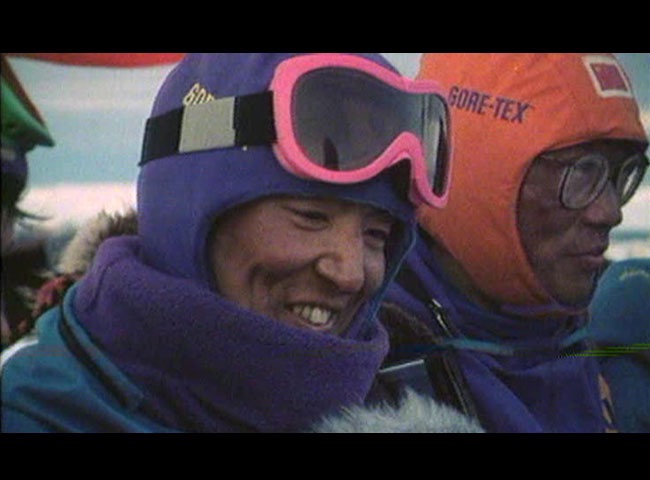Les Gens du pôle
-
Réalisé par Laurent Chevallier • Écrit par Laurent Chevallier
-
France • 1992 • 52 minutes • Couleur
- Réalisation :
Laurent Chevallier - Écriture :
Laurent Chevallier - Image :
Amar Arhab, Laurent Chevallier, Damien Morisot - Son :
Pierre Excoffier, Bernard Prud'Homme - Montage :
Ange-Marie Revel - Musique originale :
Michel Portal
- Production (structure) :
Les Films d'Ici - Coproduction :
France 2 Cinéma - Ayant droit :
Les Films d'Ici
- N° ISAN :
ISAN 0000-0001-A051-0000-Q-0000-0000-X
Résumé
Est-ce l'anglais Cook Bransfield ou Ross ? Est-ce l'américain Palmer ou Davis ? Est-ce le Baron russe Bellingshausen ou le français Dumont d'Urville qui fut le premier ?
Peu importe, dès sa découverte, à la fin du siècle dernier, l'Antarctique était déjà une terre internationale.
Dans les années 1930, l'Antarctique est entrée dans une phase d'exploration scientifique.
Les premiers chercheurs, véritables pionniers effectuèrent leurs recherches au prix d'efforts héroïques.
En 1958, c'est l'année géophysique internationale qui se pérennise par le Traité de l'Antarctique, affirmant qu'il est de l'intérêt de l'humanité que l'Antarctique soit pour toujours utilisé à des fins pacifiques.
Pas d'activité militaire, pas d'explosion nucléaire, ni dépôt de déchets radioactifs, mais liberté de recherche et échanges des résultats entre pays.
Aujourd'hui, plus de 3000 personnes, venant de vingt pays différents, vivent et travaillent à l'autre bout de la planète.
Le film nous en fait rencontrer certaines.
De la station américaine du Pôle Sud à la station chinoise de Great Wall, de la station soviétique de Mirny à la station chilienne de March.Des allemands de King Georges au guide anglais de Patriot Hills.
Who have the first? Was it Cook Bransfield or Ross?
Was it the American Palmer or Davis? Was it the Swiss Baron Belingshausen or the Frenchman Dumont Durville?
It does no matter much because from the moment the Antarctic was discovered at the end of the last century it became an international territory and the fantastic odysseys of these explorers paved the way to the conquest of the South Pole.
In the 1930's the Antarctic entered a period of scientific exploration. The first researchers were pioneers who carried out their research at the price of heroic sacrifices.
1958 was International Geophysics Year and the Treaty of the Antarctic was signed stating that "in the interests of mankind the Antarctic should always be used for peaceful purposes".
No military activity, no nuclear explosions and no depositing of radioactive waste, but the freedom to carry out research and to exchange the results between countries.
Today more than 3000 people from different countries live and work at the other end of the planet. The film takes us on a tour to see the American base at the South Pole, the Chinese Great Wall base, the Russian Mirny base, the Chilean March base and to meet the Germans at King Georges base and the British guide at Patriot Hills.
Collection
Mot(s)-clé(s) thématique(s)
À propos du film
Comment avoir accès au film ?
-
Édition DVD
- Il n'existe pas d'édition DVD à notre connaissance
-
Accès VOD
- Il n'existe pas d'accès en VOD à notre connaissance
- Diffusion non commerciale / Consultation

